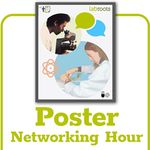Somatic analysis of cancer samples with TumorLens
Cancer is driven mainly by genomic instability, manifesting through a spectrum of somatic mutations that range from single nucleotide substitutions to large-scale chromosomal rearrangements, which disrupt signaling pathways and regulatory networks, contributing to oncogenesis and tumor progression. Oxford Nanopore sequencing (ONS) is a long-read sequencing technology that has the potential to overcome the limitations of short-read sequencing in analyzing repetitive and complex genomic regions, capable of resolving intricate genetic mutations and structural variants while simultaneously capturing epigenetic modifications. TumorLens is a novel approach for characterization of cancer samples with long read sequencing. We used TumorLens to detect somatic mutations and methylation changes genome-wide. We took special interest in detecting HLA loss of heterozygosity (LoH). Our approach leverages the advantages of Oxford Nanopore sequencing to provide a more complete and accurate assessment of HLA loss in cancer, at the genetic and epigenetic levels.
Learning Objectives:
1. Describe how long-read sequencing technologies enable detection of complex somatic mutations and structural variants in cancer samples.
2. Explain a novel method for characterizing genome-wide somatic mutations and epigenetic changes, including DNA methylation, in cancer analysis.
3. Assess the utility of long-read sequencing in identifying HLA loss of heterozygosity (LoH) and its implications for cancer genomics.




